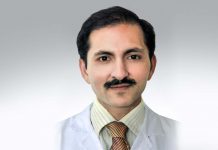Pulmonology specialist Dr Sonal Jagtap explains lung changes in diabetes.
Diabetes is the most common of all diseases worldwide. According to World Health Organisation figures for 2016, 8.5 per cent of Bahrain’s population is affected and, of those, the mortality rate is 13 per cent.
Diabetic patients are very susceptible to infections and upper and lower respiratory issues are not uncommon. Infections of the sinuses, nose, throat, airways and the lung tissue with common and uncommon bacteria, viruses and fungi are known to occur and recur. A diabetic patient is likely to catch an infection easily and also may require stronger medications for longer. Complications such as pneumonia and abscesses in the lungs, sinuses and neck are expected.
Other less known complications of diabetes may include:
• Accumulation of fibrous tissue in the lungs causes increased stiffness of both lung and chest wall.
• Loss of elastic recoil capacity in the lung leads to a dynamic collapse of small airways during exhalation.
• Decreased strength in breathing muscles results in potential impaired efficiency of the ventilatory pump contributing to functional lung defects.
• A direct effect on the small blood vessels of the lungs causes hypoxia – a reduction in the amount of oxygen reaching the blood.
• Increased risk of lung damage for smokers.
• Accelerated decline in lung function in old age.
Lung function tests can detect changes in the functional capacity of the lungs. Early reversible changes can be treated. However, prevention is always better than cure. Strict sugar control is the key to success. The following steps can help to achieve healthier complication-free lungs:
• Regular checks for blood glucose levels.
• Regular follow-up with expert physicians.
• Seeking and following good dietary advice.
• Not missing medications.
• Maintaining good hygiene.
• Taking immediate action at the slightest sign of infection.
Call 17 812-222 or email [email protected]





































